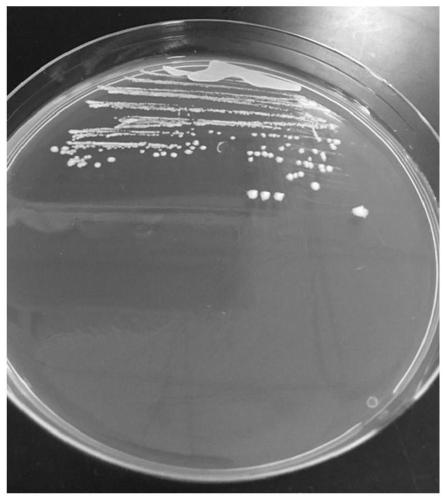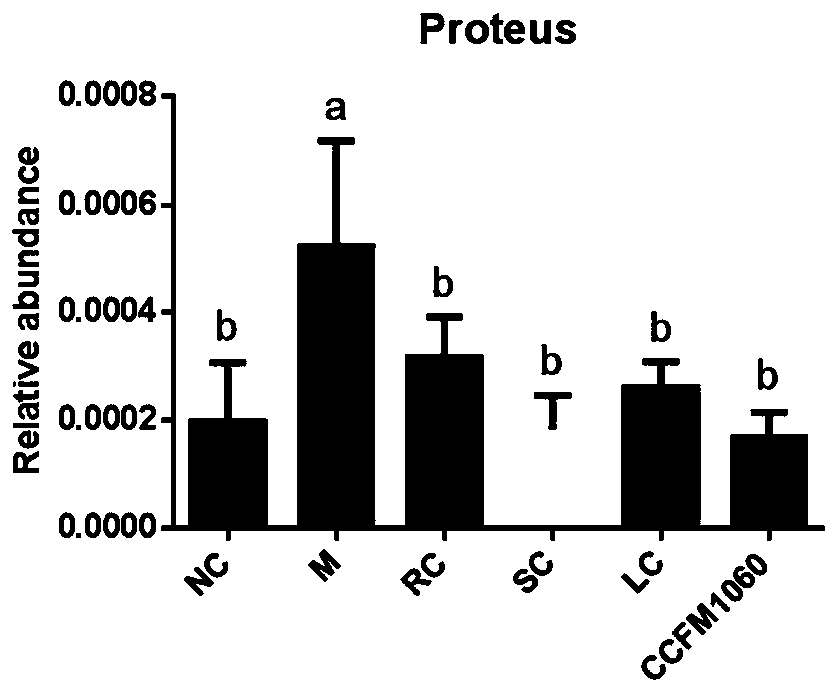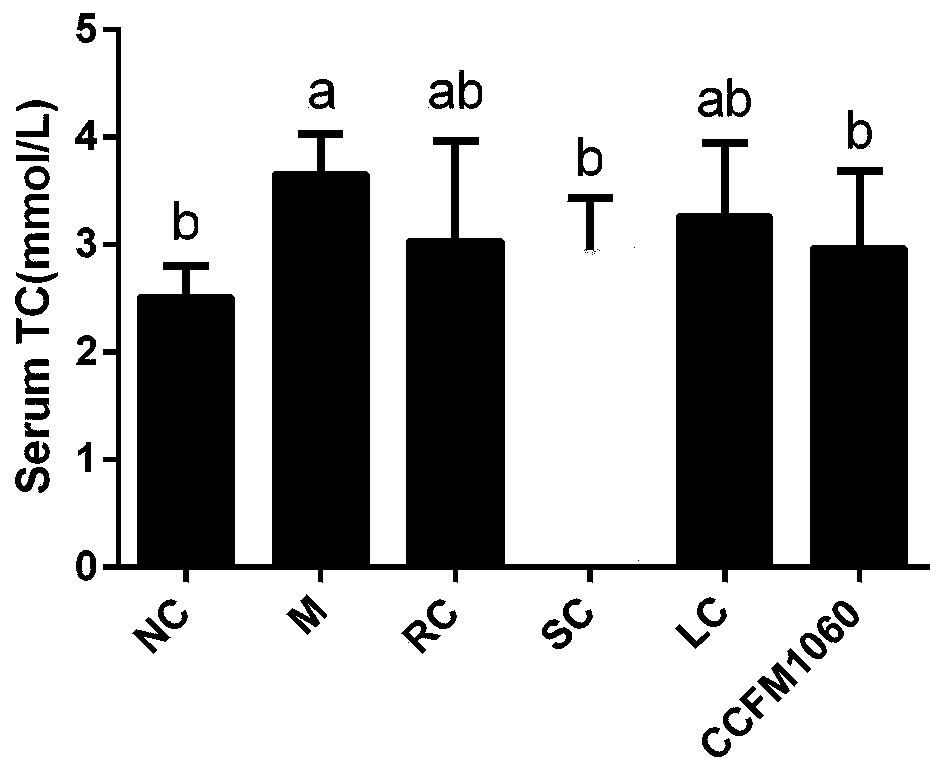Lactobacillus rhamnosus CCFM1060, fermented food and preparation method of bacterial agent
A technology of Lactobacillus rhamnosus and fermented food, applied in the direction of bacteria, lactobacillus, biochemical equipment and methods used in food preparation, can solve problems such as imperfect pathological mechanism, and achieve improvement of liver tissue damage and lipid Metabolic disorders and improving insulin resistance
- Summary
- Abstract
- Description
- Claims
- Application Information
AI Technical Summary
Problems solved by technology
Method used
Image
Examples
Embodiment 1
[0091] Example 1: Lactobacillus rhamnosus CCFM1060 has good tolerance to simulated gastrointestinal fluid
[0092] The cryopreserved Lactobacillus rhamnosus CCFM1060 was inoculated in mMRS medium (MRS medium + 0.05% cysteine hydrochloride), cultured anaerobically at 37°C for 48 hours, and subcultured in mMRS medium for 2~ After 3 times, take 1 mL of the culture solution of Lactobacillus rhamnosus CCFM1060, mix it with 9.0 mL of pH 2.5 artificial simulated gastric juice (mMRS medium containing 1% pepsin, pH=2.5), and culture it anaerobically at 37°C. Samples were taken at 0h, 0.5h, 1h, and 2h, and the mMRS agar medium was used to pour culture to count plate colonies, determine the number of viable bacteria and calculate their survival rate.
[0093]The survival rate is the ratio of the logarithmic value of the number of viable bacteria at the time of sampling to the logarithmic value of the number of viable bacteria at the 0th hour in the culture solution, expressed in %. Ta...
Embodiment 2
[0098] Example 2: Regulatory effect of Lactobacillus rhamnosus CCFM1060 on intestinal flora of NAFLD mice
[0099] Take 48 healthy male C57BL / 6J mice weighing 16-20g, adapt to the environment for 1 week, and randomly divide them into 6 groups: blank control group (NC), model control group (M), rosiglitazone control group (RC) , simvastatin control group (SC), Lactobacillus rhamnosus CCFM1060 intervention group (CCFM1060), Lactobacillus rhamnosus L10 intervention group (LC), each group contained 8 mice, and the intragastric strain consisted of 3% sucrose The solution was resuspended. The grouping and treatment methods of experimental animals are shown in Table 3:
[0100] Table 3 Grouping of experimental animals
[0101]
[0102]
[0103] At the end of the experiment, the fresh feces of the mice were collected and frozen at -80°C, the metagenome in the feces was extracted, and the structure of the intestinal flora was analyzed using a next-generation sequencer. At the ...
Embodiment 3
[0106] Embodiment 3: Lactobacillus rhamnosus CCFM1060 significantly reduces the level of serum total cholesterol (TC) in NAFLD mice
[0107] C57BL / 6J mice grouping, modeling and treatment methods were the same as in Example 2.
[0108] Experimental results such as image 3 shown. The serum total cholesterol content of the mice in the model group was significantly increased, and intragastric administration of Lactobacillus rhamnosus CCFM1060 significantly reduced the TC level of the model mice and was close to that of the blank control group. Its ability to reduce serum TC in mice was similar to that of the simvastatin drug group.
PUM
| Property | Measurement | Unit |
|---|---|---|
| diameter | aaaaa | aaaaa |
| thickness | aaaaa | aaaaa |
Abstract
Description
Claims
Application Information
 Login to View More
Login to View More - R&D
- Intellectual Property
- Life Sciences
- Materials
- Tech Scout
- Unparalleled Data Quality
- Higher Quality Content
- 60% Fewer Hallucinations
Browse by: Latest US Patents, China's latest patents, Technical Efficacy Thesaurus, Application Domain, Technology Topic, Popular Technical Reports.
© 2025 PatSnap. All rights reserved.Legal|Privacy policy|Modern Slavery Act Transparency Statement|Sitemap|About US| Contact US: help@patsnap.com



